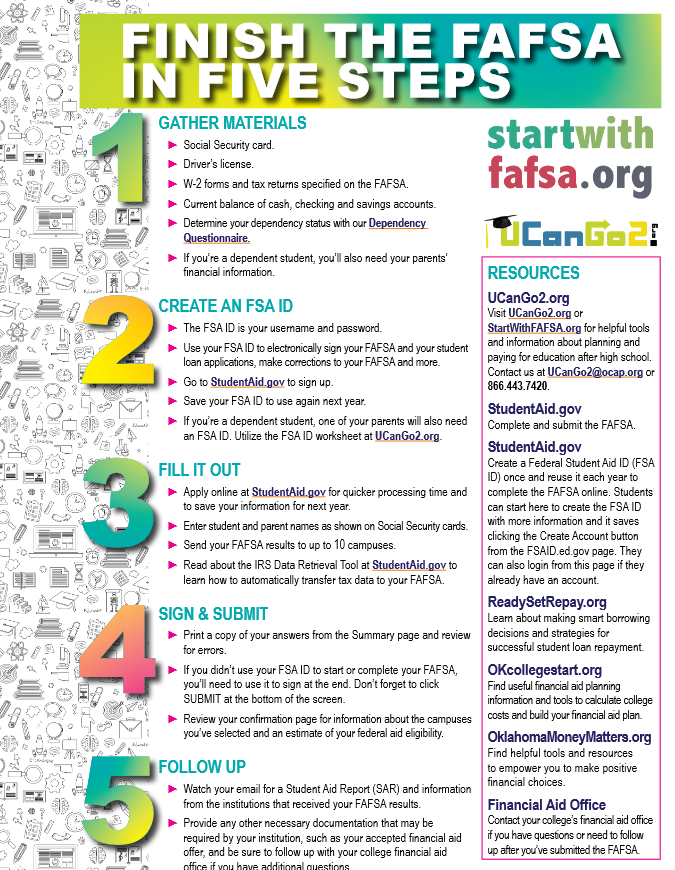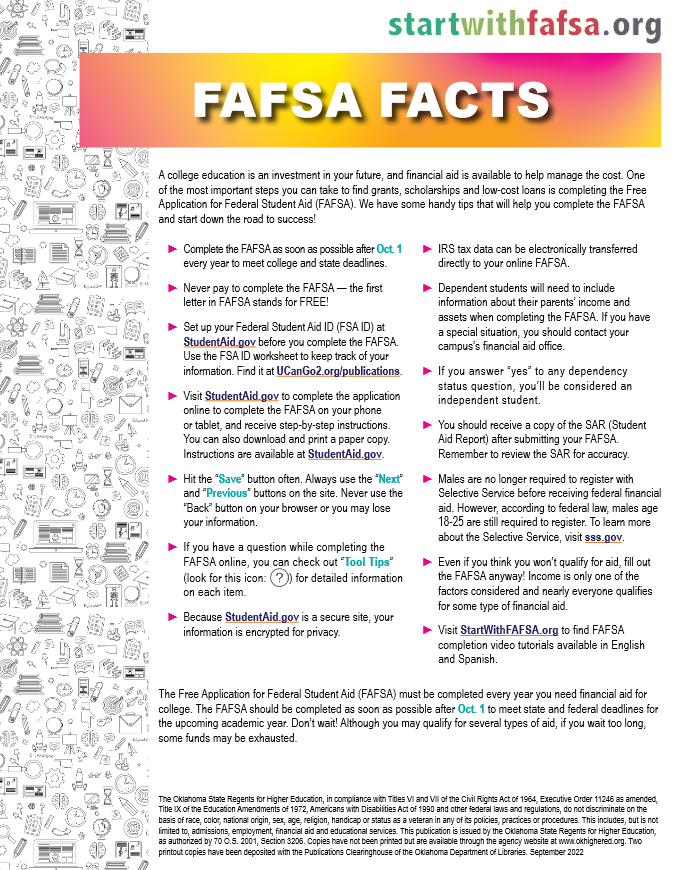How do I submit the FAFSA?
You should complete the Free
Application for Federal Student Aid (FAFSA) on or after October
1 of your senior year of high school and each year you're in
college. By completing this application, you have applied for most
federal and state financial aid.
- Gather materials
- Create a StudentAid.gov Account
- Fill it out
- Sign & submit
- Follow up
|
  |
|
To complete the FAFSA, you will need to create a StudentAid.gov
account. This is essentially a username and password that will
enable you to access and electronically sign your FAFSA, in
addition to visiting certain Department of Education websites. Once
your StudentAid.gov account has been successfully created, you will
be able to complete and sign your FAFSA without delay.
|

English
|

Spanish
|
Use the StudentAid.gov Account Worksheet to keep track of your
username and password.
Visit OKcollegestart's Scholarship Search
to find additional opportunities and check out other resources to
make
college more affordable.
The FAFSA may not be the only form required to receive a
financial aid offer from a school. You must also complete the
college admission process. Check with each of the colleges and
universities you listed on your FAFSA to determine their admission
requirements.
For more information on FAFSA completion, visit StartWithFAFSA.org to find helpful
resources and videos.
|
English
|
Spanish
|

